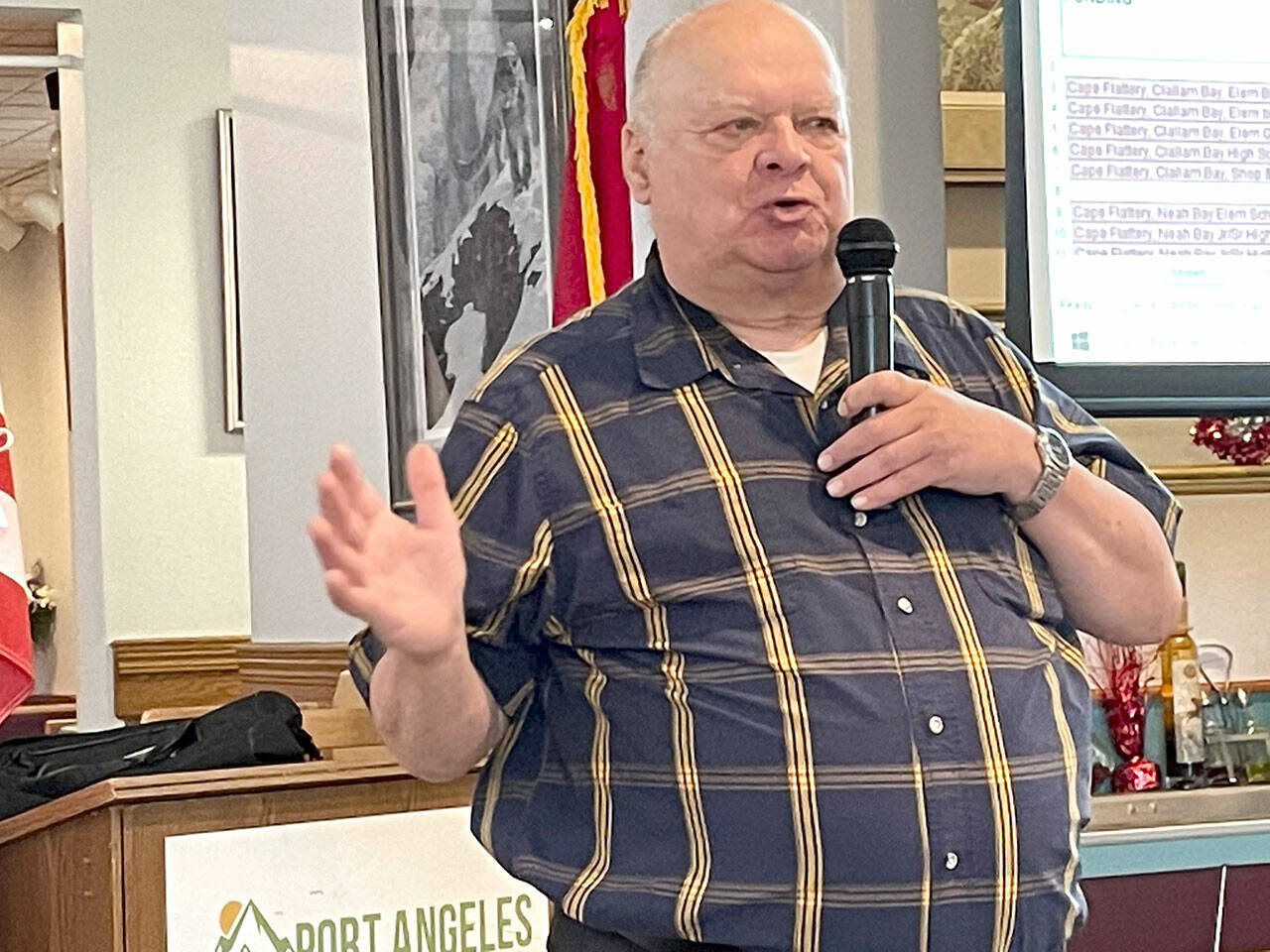Cascadia is coming, and most Washington state’s K-12 schools are structurally inadequate to withstand the devastating consequences of a major earthquake or tsunami that would lead to the deaths of children, a former state representative said.
Jim Buck, who represented the 24th Legislative District from 1995-2007, laid out the seismic risk to schools across the state, his campaign to raise awareness about the issue and his frustration with lawmakers in Olympia during a meeting of the Port Angeles Business Association on July 26 at Joshua’s Restaurant.
A major earthquake in western Washington is an almost certainty due to the Cascadia subduction zone located off the Pacific Coast shoreline that runs from northern California to Vancouver Island, Buck said.
A catastrophic tsunami as well as aftershocks would generate widespread devastation, he added.
Buck said a report published by the state Department of Natural Resources in July 2021 that assessed the seismic risk of 561 Washington state schools was “solid,” even though it did not look at every school in the state. At more than 700 pages, it was full of data, but that was not what struck him after he finished reading it.
“What got me was there was not a mention of the kids,” Buck said. “It was all about dollars and construction.”
Ninety-three percent of the 561 schools in the report received the lowest one-star structural rating out of five.
“That’s extreme danger,” Buck said. “The school can come down, leading to death and entrapment. Either you rebuild schools before the earthquake or build them after the earthquake and after the children’s funerals.”
Buck pointed to Washington lagging behind California, Oregon and British Columbia when it comes to funding for the seismic rehabilitation of public buildings, particularly schools.
“Many Washington school buildings were built prior to the adoption of seismic safety codes,” Buck said. “Older and vulnerable construction types like unreinforced masonry are more susceptible to earthquake damage.”
Buck said making seismic school safety a priority in Washington must start with citizens.
“This will have to come from grassroots activism because there is no interest from the top down,” because it is seen as too expensive, Buck said.
PABA member Kai Ahlberg suggested the issue belonged on the agenda of northwest legislative team in Olympia.
“This is not a partisan issue,” Ahlberg said.
Buck reported to the group that a bill was passed by the state Senate in March establishing a fund through which schools could obtain a grant to upgrade seismically vulnerable buildings, although it was not nearly close to the amount needed over 10 years to fix all of the schools in the state.
Buck estimated that would cost between $10 billion and $13 billion.



